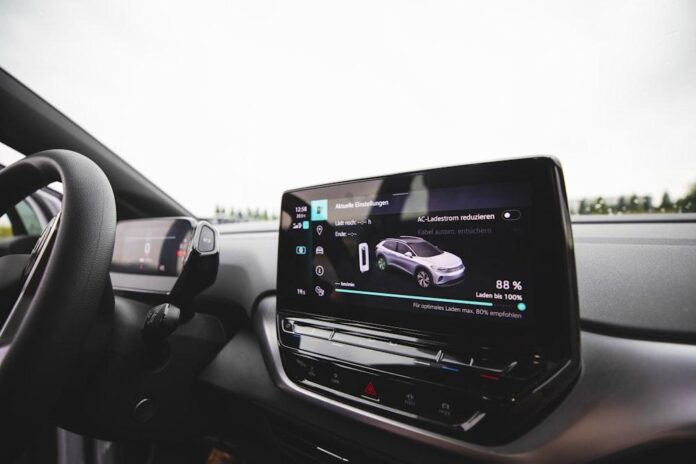As we peer into the crystal ball, it’s clear that the partnership between automotive manufacturers and electronics suppliers is poised for even more exciting developments.
Cars were once primarily mechanical beasts, but that has drastically changed now. We’re witnessing an era where electronics play a starring role in automotive design and functionality.
The journey from simple mechanical engines to vehicles equipped with advanced driver-assistance systems (ADAS), infotainment systems, and electric drivetrains marks a significant evolution in the automotive landscape.
Historically, automakers relied on their internal capabilities to design and manufacture most vehicle components. However, as vehicles became more sophisticated, the need for specialized electronic components surged.
Enter electronics suppliers ready to fill this gap with their expertise in the latest tech innovations.
Today, the collaboration between a car manufacturer and its automotive electronics supplier is deeper and more complex than ever. Automakers provide the vision and infrastructure, while electronics suppliers offer cutting-edge technology and expertise.
This partnership dynamic has led to some of the most significant advancements in the automotive industry. From electric vehicles (EVs) challenging the traditional fuel-based models to autonomous cars promising a future of hands-free driving, the impact of these collaborations is monumental.
Let us explore these partnerships’ benefits and challenges and consider what may lie in store for the industry’s future.
Critical Benefits of These Partnerships
The collaboration between automotive manufacturers and electronics suppliers is like a well-oiled machine, each part working in harmony to achieve greater goals. Let’s discuss some of the standout benefits these partnerships bring to the table:
- Speed of innovation: Electronics suppliers, with their deep dive into tech advancements, bring new pieces to the puzzle that often fit seamlessly with an automaker’s vision, accelerating the pace of innovation.
- Cost efficiency: Success in any industry ultimately comes down to smart investments. By teaming up, manufacturers and suppliers can share the hefty costs of research, development, and production. This strategic move not only spreads out expenses but maximizes the bang for each buck spent, ensuring that the end products are both cutting-edge and financially viable.
- Enhanced quality and safety: As cars become more like driving computers, the stakes skyrocket. Through these collaborations, electronics suppliers’ expertise in creating reliable and robust components comes into play. It’s a commitment to ensuring that every vehicle is made to protect what matters most—the safety of the passengers.
- Market agility: The automotive landscape is as dynamic as it gets, with consumer preferences and technological possibilities changing at breakneck speed. Partnerships enable both manufacturers and electronics suppliers to be nimble and adapt quickly to market shifts.
Challenges and Solutions
Like any meaningful relationship, the partnership between automotive manufacturers and electronics suppliers faces its share of challenges. But here’s the kicker — it’s all about turning those challenges into opportunities.
- Supply chain complexities: Managing a smooth supply chain has always been a Herculean task. The modern solution? Diversification and digitalization. By broadening their supplier base and leveraging digital tools for better supply chain visibility, automotive companies can navigate these waters more easily.
- Technological integration: With great technology comes great responsibility — to integrate it seamlessly. Regular knowledge-sharing sessions and joint development projects can bridge the knowledge gap between industries, ensuring that a vehicle’s electronic and mechanical components work in perfect harmony.
- Regulatory hurdles: As regulations evolve to keep pace with technological advancements, staying compliant is a moving target. So, there should be active engagement with regulatory bodies from the get-go. It’s about anticipating changes and being prepared, turning each potential roadblock into just another speed bump.
- Keeping pace with innovation: In an industry that’s constantly on the move, falling behind is not an option. Continuous investment in R&D, coupled with an open innovation culture that embraces external ideas and solutions, can fuel the relentless pursuit of advancement.
Future Trends in Automotive Electronics Supplier Partnerships
We’re looking at vehicles that communicate with each other, with infrastructure, and even with our homes. This interconnectivity will require closer collaboration between the automotive and electronics sectors to ensure seamless integration and enhanced user experiences.
The push for sustainable solutions will undoubtedly become even more pronounced. Partnerships will focus on developing eco-friendly materials, energy-efficient components, and recyclable electronics, ensuring that the vehicles of the future are kinder to our planet.
The role of software in vehicles will continue to grow, allowing for unprecedented levels of customization. Automotive manufacturers and electronics suppliers will work together to create software platforms that can be updated and personalized, making each vehicle unique to its driver.
Finally, there’s the question of safety. In the automotive industry, this has always been paramount, and the integration of AI and machine learning will take it to new heights. Future collaborations will look to improve predictive safety features, minimize human error, and protect passengers like never before.
The road ahead is full of possibilities, and together, automotive manufacturers and electronics suppliers are accelerating toward a horizon filled with advancement, sustainability, and connectivity.















